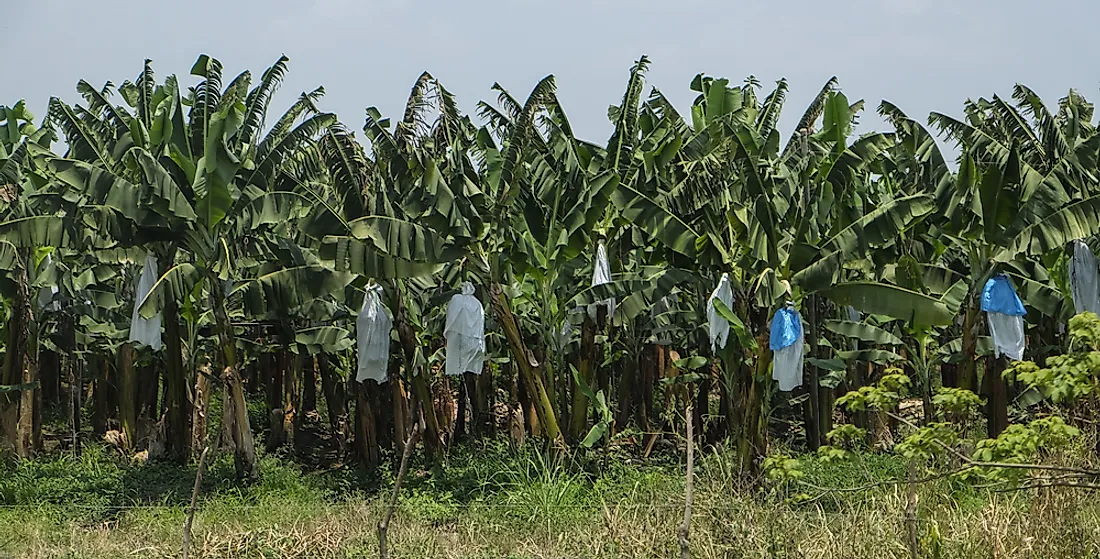What Are The Major Natural Resources Of Honduras?

Officially known as the Republic of Honduras, Honduras is a nation that is located in Central America. For differentiation from British Honduras (Belize), the country is sometimes known as Spanish Honduras. With a size of about 43,433 square miles, the country has plenty of resources that fuel its economy. The country is known for resources such as mineral (such as gold, silver, and copper), textiles, tropical fruits, sugar cane, and coffee. All the resources are utilized locally while others are exported.
Natural Resources of Honduras
Mining
Mining has always been an important source of natural resources even during colonial times. For example, during the time when the country was known as Spanish Honduras, silver mining was one of the key reasons why the Spanish invaded. At that time, the locals were working the mines until diseases and death affected their productivity and slaves from Central America had to be acquired. Other minerals included the likes of cadmium, copper, gold, marble, zinc, and gypsum. Other things that were mined (but not necessarily minerals) included cement, lead, coal, and limestone.
Unfortunately, the mining sector has never reached its full potential since things such as inadequate transportation infrastructure hampered its growth. For example, one of the biggest mines in the country, the El Mochito Mine, only hit a record high in 2001 after being in operation since the middle stages of the 1990s. Another mine, which is also the second largest mine in Honduras, the San Andres Mine, has never reached peak productivity because of the challenges.
In addition, the sector’s contribution to the economy in the past has been less than its potential. For example, mining only contributed about 2% of the gross domestic product (GDP) of the country in 2000 despite a bit of growth in 2001 to 5%.
Unfortunately, the mining sector has had some adverse effects on the environment. Another mine known as the Rosario mine, which was in operation for 74 years, shows a good example of these effects. During its operation, it was able to mine several minerals such as gold, zinc, silver, and copper from the San Juancito Mountains. The mining activities led to the destruction of many trees in order to clear space for mining. Another effect was the pollution of clean water from rivers and other water bodies.
Land
The land is also an important resource to the economy and it is utilized for several things such as agriculture. Of the total land area of 11.2 million hectares of the country, only 1.7 million hectares, which is around 15%, is used for agriculture. Despite this small size of land utilized, the citizens of Honduras have largely depended on agriculture for sustenance. Even the country’s economy largely depends on the sector.
The 20th century saw the planting of only traditional crops, especially bananas and small amounts of sugar and coffee. In fact, as of 1993, the government and two banana firms (Dole Food Company and Chiquita Brands International), owned a massive 60% of the total arable land in the country. Unsurprisingly, the banana and coffee plantations accounted for at least 50% of the total value of exports from the country in 1992. That contribution saw to it that those two plants, especially bananas, made the biggest contributions to the economy of Honduras in that year. The banana exports were worth $287 million while coffee exports were worth $148 million. These figures were posted despite the fact that farmers suffered massive losses from declining prices of the products.
Another problem for the sector came from Hurricane Mitch, which hit the country between 1998 and 1999. Fortunately, the fortunes for the sector began improving as of 2012 although the two banana giants are still in control. In the case of coffee, there is no domination from any multinational company as evidenced by at least 50,000 small-scale farmers.
Due to the poor road systems, farmers are finding it hard to produce non-traditional crops that need to get to the market fast before they spoil. However, experts are predicting that there is massive potential from non-traditional produce. In comparison, other countries in Central America with better infrastructure are reaping the rewards of these crops, which include things like vegetables and fruit.
Energy
While the nation does not fully meet its energy needs, the traditional energy sources such as biomass and fuelwood have been able to meet approximately 67% of the total needs. The households utilize most of the energy produced, about 60%, while the agriculture and transportation sectors consume about 26%. The remaining 14% of the energy is used by industries. However, since the country does not produce all of its energy, it has to supplement its production by importing electricity, about 4%, while 29% of the total needs are supplemented by petroleum imports. The water resources are also used to produce hydroelectric power.
The nation has never produced petroleum but experts have long suspected that there is a lot of oil lying in the Río Sula valley and along the Caribbean coast. Unfortunately, the government has not done anything to encourage would-be investors to explore the area. Even the small refinery that was located at Puerto Cortés ceased operations back in 1993.
Labor
Honduras has a population of at least nine million people. Unfortunately, the majority of this population represents unskilled labor since the education sector in the country is underdeveloped. In a year, only 25,000 people graduate from the National Institute of Professional Training. Of these graduates, only 21% train to be industrial workers. Consequently, the majority of a population, about 60%, that could be utilized in sectors such as manufacturing can only practice agriculture. As of 1993, the small manufacturing sector employed between 9 and 15% of the labor force. For these reasons and others, such as intense competition from bigger companies, most manufacturing firms of Honduras have since gone out of business.











